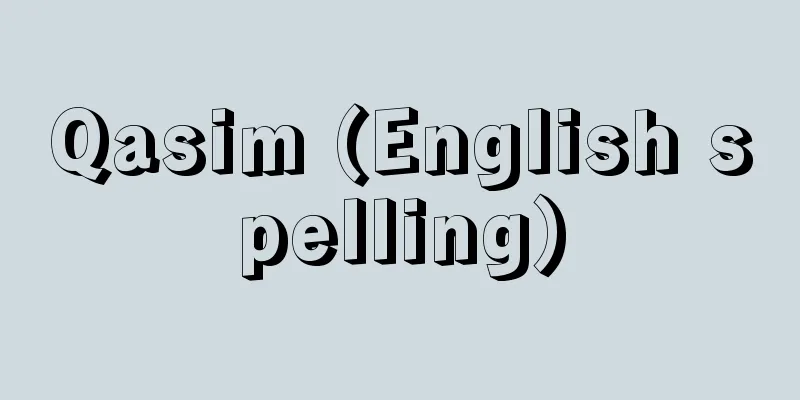Iwano Homei

|
Poet, critic, novelist, and playwright. His real name was Yoshie. He was born on January 20, 1873 in Sumoto, Hyogo Prefecture. He was the eldest son of his father, Tadao, and mother, Sato. The Iwano family had served the Hachisuka family of the Awa domain since the beginning, and had been direct retainers stationed in Edo for generations, but in 1871 (Meiji 4), they moved to Sumoto. Due to the conflict between the direct retainers and the castle lord's chief retainer, and the aftermath of the so-called Inada Riots, Hounen was persecuted by the locals when he was in elementary school, and this led to the development of his independent ego. This was also the basis for the origin of Hounen literature. He was baptized at Taisei Gakukan in Osaka in 1887. In 1888, he and his family moved to Tokyo. He studied at Meiji Gakuin and Senshu Gakko (the precursor to Senshu University), but dropped out. In 1891, she became fascinated with Oshikawa Masayoshi and went to Sendai Theological Seminary. It was during this time that she trained in literature. In 1894, she published the play "Tamahamayogetchunoyaiba (The Blade of the Tragic Spirit and the Lost Moon)". In 1895, she forcibly married Takenokoshi Ko. In 1899, she moved to Otsu City. She worked as an English teacher at Shiga Prefectural Second Junior High School, among other jobs. In 1901 (Meiji 34), she self-published her first collection of poems, "Tsujimo (Dew Jimo)". In 1902, she returned to Tokyo. In 1903, she founded the poetry magazine "Shirayuri (White Lily)". He published a total of five poetry collections, starting with his second collection, "Evening Tide" (1904), followed by "Sad Love Elegy" (1905), "Sake Cup in the Dark" (1908), and "Love Exchange" (1915). In 1906, he published his first novel, Geisha Kotake, and Mysterious Half-Beastism, which became the prototype of the philosophy of Hounen literature. In 1907, he wrote Japan's first New Style Poetry History, and published New Style Poetry Method and a collection of essays, New Naturalism (1908). He was in fierce opposition to senior naturalist writers Shimazaki Toson and Tayama Katai, critics Hasegawa Tenkei and Shimamura Hogetsu, and the anti-naturalist school of Natsume Soseki, and advocated the position of so-called " new naturalist literature." In 1909, he established himself as a writer with Tankeki. He tried his hand at a canned crab business in Karafuto (Sakhalin) and failed, but this experience inspired the creation of his long novel, Hounen Pentalogy. He wandered through Sakhalin and Hokkaido, and returned to Tokyo in 1909. He separated from his wife and cohabited with feminist Endo Kiyoko (later his second wife). There was a stir over whether "the spirit or the flesh will win." He is famous for his insistence on monistic depiction as opposed to the two-dimensional depiction of Hanagata. In 1913 (Taisho 2), he translated A. Simmons's "The Representational Literary Movement," which had a great influence on Kobayashi Hideo and Nakahara Chuya. His collections of essays, "Modern Thought and Real Life" (1913) and "Anatomy of Modern Life" (1915), are valuable works that should be read in conjunction with his assertions of Japanese nationalism. He also excels in short stories, and there are also some worthwhile works about labor and humorous stories about human nature. He had a turbulent life, marrying three times, and was not blessed with a good family life. His extraordinary personality, philosophy of life and its implementation were unparalleled. He died of a perforated colon on May 9, 1920. His grave is in Zoshigaya (Toshima-ku, Tokyo). His posthumous Buddhist name was "Houmei Koji." [Ban Yutaka] "Complete Works of Japanese Literature 13: Iwano Homei" (1974, Shueisha)" ▽ "Chikuma Modern Literature Series 5: Iwano Homei and Other Works" (1977, Chikuma Shobo)" ▽ "The Age of Iwano Homei" by Norio Okubo (1973, Fuyukisha)" ▽ "A Discussion of Iwano Homei" by Etsuo Ban (1977, Sobunsha) [Reference item] |©Shogakukan Library "> Iwano Homei Source: Shogakukan Encyclopedia Nipponica About Encyclopedia Nipponica Information | Legend |
|
詩人、評論家、小説家、劇作家。本名美衛(よしえ)。明治6年1月20日、兵庫県洲本(すもと)に生まれる。父直夫(ただお)、母さとの長男。岩野家は初代より阿波(あわ)藩蜂須賀(はちすか)家に仕え、代々江戸詰直参(じきさん)であったが、1871年(明治4)洲本に転住。直参派と城代家老との拮抗(きっこう)、いわゆる稲田騒動の余波もあって、泡鳴は小学校当時、土地の者から迫害され、独存自我が生成されていった。これは泡鳴文学の発祥基盤でもあった。1887年大阪の泰西学館で受洗。1888年一家をあげて上京。明治学院や専修学校(専修大学の前身)で学ぶが中退。1891年押川方義(おしかわまさよし)を慕い、仙台神学校に赴く。文学修業時代であった。1894年戯曲『悲劇魂迷月中刃(たまはまようげっちゅうのやいば)』を発表。1895年竹腰(たけのこし)こうと強引に結婚。1899年大津市に移住。滋賀県立第二中学校で英語教師などをした。1901年(明治34)第一詩集『露じも』を自費出版。1902年帰京。1903年詩歌雑誌『白百合(しらゆり)』を創刊。第二詩集『夕潮』(1904)から『悲恋悲歌』(1905)、『闇(やみ)の盃盤(はいばん)』(1908)、『恋のしやりかうべ』(1915)と、つごう5詩集を数えた。 1906年に処女小説『芸者小竹』を、また泡鳴文学の思想の原型ともなった『神秘的半獣主義』を刊行。さらに1907年にはわが国最初の『新体詩史』を手がけたり、『新体詩作法』や、評論集『新自然主義』(1908)を発表。先輩の自然主義作家島崎藤村(とうそん)、田山花袋(かたい)、評論家の長谷川天渓(てんけい)、島村抱月(ほうげつ)などや、反自然主義の夏目漱石(そうせき)一派にも厳しく対立し、いわゆる「新自然主義文学」の立場を標榜(ひょうぼう)した。1909年『耽溺(たんでき)』で作家として地位を確立。樺太(からふと)(サハリン)でカニの缶詰事業に手を出し失敗したが、この体験が彼一代の長編『泡鳴五部作』を生み出す。樺太、北海道を放浪し、1909年帰京。妻と別居し、女性運動家遠藤清子(のち第二の妻)と同棲(どうせい)。「霊が勝つか肉が勝つか」と騒がれた。描写面では花袋の平面描写に対して一元描写を主張したのは有名。1913年(大正2)にはA・シモンズの『表象派の文学運動』を訳し、小林秀雄(ひでお)、中原中也(ちゅうや)などに多大な影響を与えた。評論集『近代思想と実生活』(1913)、『近代生活の解剖』(1915)は、日本主義の主張とあわせて読むべき貴重なもの。短編群にも優れ、労働物、有情滑稽物(こっけいもの)などにもみるべきものがある。3回も結婚するなど波瀾(はらん)の多い一生で、家庭的には恵まれなかった。その個性の非凡なこと、生命主義とその実行性は、類を絶するものであった。大正9年5月9日、大腸穿孔(せんこう)のため落命。墓所は雑司ヶ谷(ぞうしがや)(東京都豊島区)。法名「泡鳴居士」。 [伴 悦] 『『日本文学全集13 岩野泡鳴』(1974・集英社)』▽『『筑摩現代文学大系5 岩野泡鳴他集』(1977・筑摩書房)』▽『大久保典夫著『岩野泡鳴の時代』(1973・冬樹社)』▽『伴悦著『岩野泡鳴論』(1977・双文社)』 [参照項目] |©小学館ライブラリー"> 岩野泡鳴 出典 小学館 日本大百科全書(ニッポニカ)日本大百科全書(ニッポニカ)について 情報 | 凡例 |
>>: Ivanovo - Iwanobo (English spelling) Иваново/Ivanovo
Recommend
Pterolepis
...A fish of the family Pterygolepisidae, subclas...
Yonezawa [city] - Yonezawa
The city occupies a wide mountainous area in the s...
Transhumance - Iboku
A form of seasonal migration of pastoralists and ...
Tamamushi Sadayu
Year of death: 9th May 1869 (Meiji 2) Year of birt...
Rock Barnacle - Rock Barnacle
A marine animal belonging to the order Acantharii...
Ljudmil Stojanov
1888‐1973 Bulgarian author. His real name was Geor...
Peacock Fern
A summer-green fern of the Capillaria family found...
Fučik, J.
…A Central European republic that existed from 19...
Estrone - Estron (English spelling) estrone
A steroid hormone secreted from the ovaries of fe...
Xenops minutes
...They live in trees and forests, building nests...
Nuclear America - Nuclear America
...By about 1000 BCE, the basic characteristics o...
Ujiyamada Town - Ujiyamada
...A city in the southeastern part of Mie Prefect...
Hama-naka [town] - Hama-naka
A town in Akkeshi County, eastern Hokkaido. Facing...
Toyonobu Ishikawa
A mid-Edo period ukiyo-e artist. A representative...
high moor
...fens are broadly divided into mineralotrophic ...









